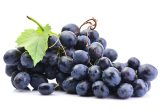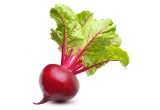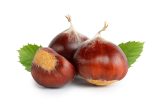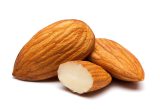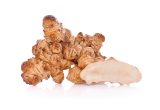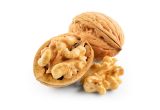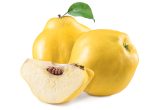Persimmon

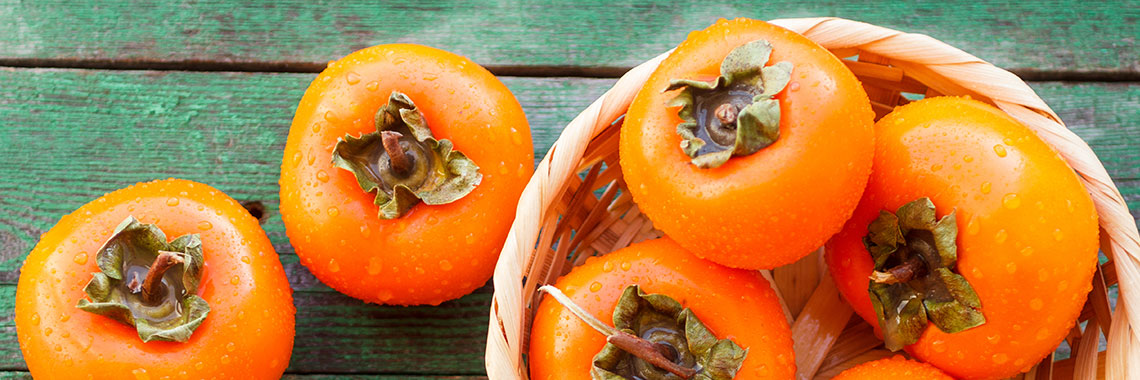
Description
- The persimmon tree (Diospyros kaki L.) belongs to the Ebenaceae family.
- Its fruit, the persimmon, has been cultivated in East Asia for hundreds of years, in China, Japan and Korea (Kim, 2013; Hitaka, 2013).
- Persimmon is grown in temperate regions all over the world (Giordani, 2013).
PHYSICAL AND ORGANOLEPTIC CHARACTERISTICS
- Carotenoids are bioactive compounds that contribute to the orange colour of persimmon (Smrke, 2019).
- β-carotene and β-cryptoxanthin are thought to be the predominant carotenoids in persimmon (Smrke, 2019).
- There are several types of persimmon cultivars with varying astringency depending on the tannin content[1]. The higher the tannin content of the fruit, the more astringent it is (Dalvi, 2018).
- The astringency of the fruit is also thought to depend on its ripeness: young fruit is rich in proanthocyanidin (or condensed tannins[2]) and therefore astringent (Hu, 2013).
- The sugar content in persimmon flesh, and thus its sweetness, is higher than in apples, peaches, oranges and pears, amounting to 12.5 g/100 g. The most common sugars are glucose and fructose (Smrke, 2019).
- The volatile profile of ‘Rojo Brillante’ persimmon, the main variety in Spain, and ‘Kaki Tipo’, widely grown in Italy, showed no or low concentrations of terpenes, sulphur compounds and lactones, but did show high concentrations of alcohols and short chain aldehydes (methanol, acetaldehyde and ethanol) (Taiti, 2018).
COMPOSITION CHARACTERISTICS (excluding macronutrients, vitamins and minerals)
- Persimmon (Diospyros kaki) is rich in antioxidants such as ascorbic acid, carotenoids and various polyphenols including tannins (Favati, 2018; Maulidiani, 2018).
- Tannins are reported to exert several biological effects, involving antioxidant, anti-inflammatory, anti-tumour, antihypertensive, and antidiabetic activities (Forouzanfar, 2016; Matsumura, 2016).
- Brazilian researchers reported that extracts of “Rama Forte” fruit, a seedless, tannin-rich variety of persimmon, showed mainly anti-free radical activity and relevant antioxidant activity. They added that ripening decreases the concentration or effectiveness of soluble antioxidants (Dalvi, 2018).
- Among the carotenoids, present especially in persimmon seed, β-carotene, lycopene, β-cryptoxanthin monomyristic acid ester, zeaxanthin di-myristic acid ester and oleanolic acid have been identified (Hitaka, 2013).
- In vitro studies have shown that persimmon fruit appears to have the ability to prevent LDL oxidation and inhibit oxidative damage to human leukocytes (Grygorieva, 2018).
- Scientifically based evidence strongly asserts that persimmon protects against hyperlipidemia and hyperglycemia (Suleria, 2019).
RAW
The following values are approximate and depend on variety, season, ripeness, cultivation conditions, etc.
Persimmon provides on average 68.60 calories (kcal) for 100 g, i.e. 290 kJ. One persimmon weighs between 150 and 400 g on average, meaning it provides between 102.90 and 274.40 kcal.
COMPOSITION TABLES
For each nutrient, the tables provide information on the content, the minimum and maximum values, as well as the percentage of the Dietary Reference Values (DRVs) for 100 g net of persimmon, pulp, raw.
MACRONUTRIENTS
| Constituent (g) | Average content |
Min-Max per 100g |
DRV% |
|---|---|---|---|
| Water | 81,80 | 64,40 - NC | - |
| Fibers | 3,40 | NC - 6,90 | - |
| Carbohydrates | 14,30 | 13,40 - 17,10 | 5,50 |
| Sugars | 13,90 | 12,10 - 14,30 | 15,44 |
| Lipids | < 0,30 | 0,20 - 0,50 | - |
| Saturated fat | < 0,01 | NC - 0,02 | - |
| Protein | 0,88 | 0,50 - 0,90 | 1,76 |
| Constituent (g) | Amount | Min-Max | DRV% |
|---|---|---|---|
| Water | Ciqual 2020 (valeur issue des analyses Ciqual-Aprifel 2018) | - | - |
| Fibers | Ciqual 2020 (valeur issue des analyses Ciqual-Aprifel 2018) | - | - |
| Carbohydrates | Ciqual 2020 | - | Règlement (UE) N°1169/2011 du parlement Européen et du conseil du 25 octobre 2011 |
| Sugars | Ciqual 2020 (valeur issue des analyses Ciqual-Aprifel 2018) | - | Règlement (UE) N°1169/2011 du parlement Européen, et du conseil du 25 octobre 2011 |
| Lipids | Ciqual 2020 (valeur issue des analyses Ciqual-Aprifel 2018) | - | Règlement (UE) N°1169/2011 du parlement Européen et du conseil du 25 octobre 2011 |
| Saturated fat | Ciqual 2020 (valeur issue des analyses Ciqual-Aprifel 2018) | - | Règlement (UE) N°1169/2011 du parlement Européen et du conseil du 25 octobre 2011 |
| Protein | Ciqual 2020 (valeur issue des analyses Ciqual-Aprifel 2018) | - | Règlement (UE) N°1169/2011 du parlement Européen et du conseil du 25 octobre 2011 |
Zoom on carbohydrates
- The energy of persimmon comes mainly from its carbohydrates, at 14.30 g per 100 g.
- This content is above the average amount in fresh fruit: about 11.31 g per 100 g.
- Its carbohydrates are mainly glucose (7.50 g per 100 g) and fructose (6.40 g per 100 g).
Zoom on fibres
- Persimmon is a source of fibre*, as it provides 3.40 g of fibre per 100 g, i.e. more than 3 g per 100 g.
- This amount is higher than the average quantity found in fresh fruit (2.77 g per 100 g).
Zoom on proteins
- The protein content of persimmon (0.88 g per 100 g) is slightly lower than the average amount in fresh fruit: 0.93 g per 100 g.
Zoom on lipids
- Persimmon is fat-free* as it contains less than 0.5 g of fat per 100 g.
*Regulation (EC) No 1924/2006 of the European Parliament and of the Council of 20 December 2006 on nutrition and health claims made on foods.
MINERALS AND TRACE ELEMENTS
| Constituent | Average content |
Min-Max per 100g |
DRV% |
|---|---|---|---|
| Calcium (mg) | 6,90 | 6,50 - 27 | 0,86 |
| Chloride (mg) | 33 | 30,20 - NC | 4,13 |
| Copper (mg) | 0,03 | NC - 0,11 | 3 |
| Iron (mg) | 0,06 | NC - 2,50 | 0,43 |
| Iodine (µg) | < 20 | - | - |
| Magnesium (mg) | 7,20 | 6,40 - 12,60 | 1,92 |
| Manganese (mg) | 0,13 | 0,06 - 0,36 | 6,50 |
| Phosphorus (mg) | 13 | NC - 26 | 1,86 |
| Potassium (mg) | 160 | NC - 310 | 8 |
| Selenium (µg) | < 20 | - | - |
| Sodium (mg) | < 5 | 1 - 12 | - |
| Zinc (mg) | < 0,05 | NC - 0,11 | - |
| Constituent | Amount | Min-Max | DRV% |
|---|---|---|---|
| Calcium (mg) | Ciqual 2020 (valeur issue des analyses Ciqual-Aprifel 2018) | - | Règlement (UE) N°1169/2011 du parlement Européen et du conseil du 25 octobre 2011 |
| Chloride (mg) | Ciqual 2020 (valeur issue des analyses Ciqual-Aprifel 2018) | - | Règlement (UE) N°1169/2011 du parlement Européen et du conseil du 25 octobre 2011 |
| Copper (mg) | Ciqual 2020 (valeur issue des analyses Ciqual-Aprifel 2018) | - | Règlement (UE) N°1169/2011 du parlement Européen et du conseil du 25 octobre 2011 |
| Iron (mg) | Ciqual 2020 (valeur issue des analyses Ciqual-Aprifel 2018) | - | Règlement (UE) N°1169/2011 du parlement Européen et du conseil du 25 octobre 2011 |
| Iodine (µg) | Ciqual 2020 (valeur issue des analyses Ciqual-Aprifel 2018) | - | Règlement (UE) N°1169/2011 du parlement Européen et du conseil du 25 octobre 2011 |
| Magnesium (mg) | Ciqual 2020 (valeur issue des analyses Ciqual-Aprifel 2018) | - | Règlement (UE) N°1169/2011 du parlement Européen et du conseil du 25 octobre 2011 |
| Manganese (mg) | Ciqual 2020 (valeur issue des analyses Ciqual-Aprifel 2018) | - | Règlement (UE) N°1169/2011 du parlement Européen et du conseil du 25 octobre 2011 |
| Phosphorus (mg) | Ciqual 2020 (valeur issue des analyses Ciqual-Aprifel 2018) | - | Règlement (UE) N°1169/2011 du parlement Européen et du conseil du 25 octobre 2011 |
| Potassium (mg) | Ciqual 2020 (valeur issue des analyses Ciqual-Aprifel 2018) | - | Règlement (UE) N°1169/2011 du parlement Européen et du conseil du 25 octobre 2011 |
| Selenium (µg) | Ciqual 2020 (valeur issue des analyses Ciqual-Aprifel 2018) | - | Règlement (UE) N°1169/2011 du parlement Européen et du conseil du 25 octobre 2011 |
| Sodium (mg) | Ciqual 2020 (valeur issue des analyses Ciqual-Aprifel 2018) | - | - |
| Zinc (mg) | Ciqual 2020 (valeur issue des analyses Ciqual-Aprifel 2018) | - | Règlement (UE) N°1169/2011 du parlement Européen et du conseil du 25 octobre 2011 |
Zoom on minerals and trace elements
- The mineral salt best represented in persimmon is potassium with a content equivalent to 8% of DRVs, i.e. 160 mg per 100 g.
- The other minerals and trace elements are present in quantities representing less than 7% of DRVs.
VITAMINS
| Constituent | Average content |
Min-Max per 100g |
DRV% |
|---|---|---|---|
| Provitamin A Beta-carotene (µg) | 180 | 90,10 - 266 | - |
| Vitamin A equivalent (µg) | 30 | 15,02 - 44,33 | 3,75 |
| Vitamin B1 (mg) | < 0,015 | NC - 0,26 | - |
| Vitamin B2 (mg) | < 0,01 | NC - 0,02 | - |
| Vitamin B3 (mg) | < 0,10 | - | - |
| Vitamin B5 (mg) | 0,14 | NC - 0,27 | 2,33 |
| Vitamin B6 (mg) | < 0,01 | NC - 0,10 | - |
| Vitamin B9 (µg) | 22,10 | 5 - NC | 11,05 |
| Vitamin C (mg) | 3,41 | 2,10 - 66 | 4,26 |
| Vitamin E (mg) | 0,12 | NC - 0,73 | 1 |
| Vitamin K1 (µg) | < 0,80 | NC - 2,60 | - |
| Constituent | Amount | Min-Max | DRV% |
|---|---|---|---|
| Provitamin A Beta-carotene (µg) | Ciqual 2020 (valeur issue des analyses Ciqual-Aprifel 2018) | - | - |
| Vitamin A equivalent (µg) | Calcul à partir de la valeur Provitamine A Béta-carotène* | - | Règlement (UE) N°1169/2011 du parlement Européen et du conseil du 25 octobre 2011 |
| Vitamin B1 (mg) | Ciqual 2020 (valeur issue des analyses Ciqual-Aprifel 2018) | - | Règlement (UE) N°1169/2011 du parlement Européen et du conseil du 25 octobre 2011 |
| Vitamin B2 (mg) | Ciqual 2020 (valeur issue des analyses Ciqual-Aprifel 2018) | - | Règlement (UE) N°1169/2011 du parlement Européen et du conseil du 25 octobre 2011 |
| Vitamin B3 (mg) | Ciqual 2020 (valeur issue des analyses Ciqual-Aprifel 2018) | - | Règlement (UE) N°1169/2011 du parlement Européen et du conseil du 25 octobre 2011 |
| Vitamin B5 (mg) | Ciqual 2020 (valeur issue des analyses Ciqual-Aprifel 2018) | - | Règlement (UE) N°1169/2011 du parlement Européen et du conseil du 25 octobre 2011 |
| Vitamin B6 (mg) | Ciqual 2020 (valeur issue des analyses Ciqual-Aprifel 2018) | - | Règlement (UE) N°1169/2011 du parlement Européen et du conseil du 25 octobre 2011 |
| Vitamin B9 (µg) | Ciqual 2020 (valeur issue des analyses Ciqual-Aprifel 2018) | - | Règlement (UE) N°1169/2011 du parlement Européen et du conseil du 25 octobre 2011 |
| Vitamin C (mg) | Ciqual 2020 (valeur issue des analyses Ciqual-Aprifel 2018) | - | Règlement (UE) N°1169/2011 du parlement Européen et du conseil du 25 octobre 2011 |
| Vitamin E (mg) | Ciqual 2020 (valeur issue des analyses Ciqual-Aprifel 2018) | - | Règlement (UE) N°1169/2011 du parlement Européen et du conseil du 25 octobre 2011 |
| Vitamin K1 (µg) | Ciqual 2020 (valeur issue des analyses Ciqual-Aprifel 2018) | - | Règlement (UE) N°1169/2011 du parlement Européen et du conseil du 25 octobre 2011 |
Zoom on vitamins
- Persimmon provides a significant amount of vitamin B9, as it represents 11.05% of DRVs, i.e. 22.10 µg per 100 g.
- The other vitamins are present in quantities representing less than 5% of DRVs.
*Calculation made: Beta Carotene / 6 + retinol
POLYPHENOLS
| Constituent (mg) | Average content |
Min-Max per 100mg |
|---|---|---|
| Flavonoids (mg) | 1,28 | 1,28 - 1,28 |
| of which Flavanols (mg) | 1,28 | 1,28 - 1,28 |
| Total polyphenols | 1,28 | 1,28 - 1,28 |
| Constituent (mg) | Amount | Min-Max |
|---|---|---|
| Flavonoids | Phenol explorer 3.6 Méthode utilisée : Chromatographie | - |
| of which Flavanols | Phenol explorer 3.6 Méthode utilisée : Chromatographie | - |
| Total polyphenols | Phenol explorer 3.6 Méthode utilisée : Chromatographie | - |
Zoom on polyphenols
- Polyphenols are substances with an antioxidant effect.
- The polyphenols found in persimmon are in the form of flavanols, from the flavonoid family.
Nutrition and health claims
According to the definitions of nutrition claims as set out in Regulation (EC) No 1924/2006 on nutrition and health claims, and in view of the composition of persimmon, the following claims may be used:
NUTRITION CLAIMS OF PERSIMMON
- Source of fibre (100 g of persimmon provide more than 3 g of fibre)
- Persimmon is fat-free* as it contains less than 0.5 g of fat per 100 g.
References
- Agence nationale de sécurité sanitaire de l’alimentation, de l’environnement et du travail. Table de composition nutritionnelle des aliments Ciqual 2020. Consultée le 25/08/2020 depuis le site internet Ciqual https://ciqual.anses.fr/
- Dalvi LT, Moreira DC, Alonso A, de Avellar IGJ, Hermes-Lima M. Antioxidant activity and mechanism of commercial Rama Forte persimmon fruits (Diospyros kaki). PeerJ. 2018;6:e5223.
- Favati F, Cappiello F, Lardo P, Ancillotti C, Del Bubba M, Giordani E. Evaluation of pomological and nutritional characteristics of ‘Kaki Tipo’ and ‘Rojo Brillante’ persimmon fruits at the ripe-stage eating quality. Acta Horticulturae. 2018;1195:211-8.
- Forouzanfar F, Torabi S, Askari VR, Asadpour E, Sadeghnia HR. Protective effect of diospyros kaki against glucose-oxygen-serum deprivation-induced PC12 cells injury. Advances in Pharmacological Sciences. 2016;2016:3073078.
- Giordani E, Naval M, Benelli C. In vitro propagation of persimmon (Diospyros kaki Thunb.). Methods Mol Biol. 2013;11013:89-98.
- Grygorieva O, Kucharska AZ, Piorecki N, Klymenko S, Vergun O, Brindza J. Antioxidant activities and phenolic compounds in fruits of various genotypes of American persimmon (Diospyros virginiana L.) Acta Scientiarum Polonorum. Technologia Alimentaria. 2018;17(2):117-24.
- Hitaka Y, Nakano A, Tsukigawa K, Manabe H, Nakamura H, Nakano D, Kinjo J, Nohara T, Maeda H. Characterization of carotenoid fatty acid esters from the peels of the persimmon Diospyros kaki. Chem Pharm Bull (Tokyo). 2013;61(6):666-9.
- Hu Q, Luo C, Zhang Q, Luo Z. Isolation and characterization of a laccase gene potentially involved in proanthocyanidin polymerization in Oriental persimmon (Diospyros kaki Thunb.) fruit. Mol Biol Rep. 2013;40(4):2809-20.
- Kim HH, Kim DS, Kim SW, Lim SH, Kim DK, Shin TY, Kim SH. Inhibitory effects of Diospyros kaki in a model of allergic inflammation: role of cAMP, calcium and nuclear factor-κB. Int J Mol Med. 2013;32(4):945-51.
- Matsumura Y, Ito T, Yano H. Antioxidant potential in non-extractable fractions of dried persimmon (Diospyros kaki Thunb.). Food Chemistry. 2016;202:99-103.
- Maulidiani M, Mediani A, Abas F, Park YS, Park YK, Kim YM, Gorinstein S. 1H NMR and antioxidant profiles of polar and non-polar extracts of persimmon (Diospyros kaki L.)–metabolomics study based on cultivars and origins. Talanta. 2018;184:277-86.
- Neveu V, Perez-Jiménez J, Vos F, Crespy V, du Chaffaut L, Mennen L, Knox C, Eisner R, Cruz J, Wishart D, Scalbert A. (2010) Phenol-Explorer: an online comprehensive database on polyphenol contents in foods. Database, doi: 10.1093/database/bap024. Full text (free access)
- Règlement (CE) N° 1924/2006 du Parlement européen et du Conseil du 20 décembre 2006 concernant les allégations nutritionnelles et de santé portant sur les denrées alimentaires.
- Règlement (UE) N°432/2012 de la Commission du 16 mai 2012 établissant une liste des allégations de santé autorisées portant sur les denrées alimentaires, autres que celles faisant référence à la réduction du risque de maladie ainsi qu’au développement et à la santé infantiles.
- Règlement (UE) n°1169/2011 du Parlement européen et du Conseil du 25 octobre 2011 concernant l’information des consommateurs sur les denrées alimentaires, modifiant les règlements (CE) n°1924/2006 et (CE) n°1925/2006 du Parlement européen et de Conseil et abrogeant la directive 87/250/CEE de la Commission, la directive 90/496/CEE du Conseil, la directive 1999/10/CE de la Commission, la directive 200/13/CE du Parlement européen et du Conseil, les directives 2002/67/CE et 2008/5/CE de la Commission et le règlement (CE) n°608/2004 de la Commission.
- Smrke T, Persic M, Veberic R. Influence of reflective foil on persimmon (Diospyros kaki Thunb.) fruit peel colour and selected bioactive compounds. Sci Rep. 2019;9:19069.
- Suleria R, Barrow C (2019). Bioactive compounds from plant origin. New York : Sulera R, Barrow C ; 332 p.
- Taiti C, Petrucci WA, Pecchioli S, Mancuso S, Giordani E. Volatile compound fingerprinting of ‘Kaki Tipo’ and ‘Rojo Brillante’ persimmon fruits at ripe-stage eating quality. Acta Hortic. 2018;1195:257-62.





